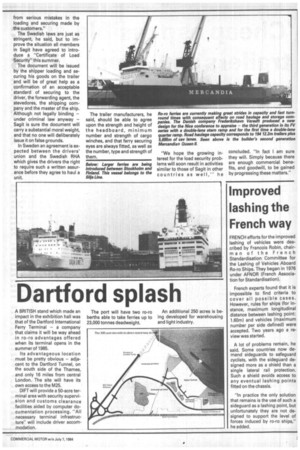Improved lashing the French way
Page 35

If you've noticed an error in this article please click here to report it so we can fix it.
FRENCH efforts for the improved lashing of vehicles were described by Francois Robin, chairman of the French Standardisation Committee for the Lashing of Vehicles Aboard Ro-ro Ships. They began in 1976 under AFNOR (French Association for Standardisation).
French experts found that it is impossible to find criteria to cover all possible cases. However, rules for ships (for instance, maximum longitudinal distance between lashing point: 1.60m) and vehicles (maximum number per side defined) were accepted. Two years ago a review was started.
A lot of problems remain, he said. Some countries now demand sideguards to safeguard cyclists, with the sideguard designed more as a shield than a single lateral rail protection. Such a shield avoids access to any eventual lashing points fitted on the chassis.
"In practice the only solution that remains is the use of such a sideguard as a lashing point, but unfortunately they are not designed to support the level of forces induced by ro-ro ships," he added.




























































































